High Street Railway Bridge
On
Saturday
2nd
February
2013
the
railway
bridge
that
had
been
constructed
in
1883
across
the
High
Street
was
finally
retired
after
130
years
of
service.
Its
new
replacement
should
hopefully
see
another
120
years
of
service.
The
new
bridge
was
brought
to
Southend
in sections on a number of articulated lorries and constructed in the nearby Tyler’s Avenue car park.
On
the
day
of
removal
the
old
bridge
was
lowered
and
wheeled
out
of
the
way
using
two
self-propelled
modular
transports
with
hydraulic
elevating
platforms,
which
were
electrically
operated
by
a
remote
control,
the
two
transporters
had
16
bogies
each
(32
in
total).
The
same
equipment
and
technique
would
be
used
but
in
reverse
to
install
the
new
bridge.
The
new
bridge
was
transported
some
691ft
and
then
lifted
to
its
new
home.
Once
in
place
work
started
to
relay
the
tracks,
ballast
and
reconnect
the
signalling,
the
first
train
to
cross
the
bridge
was
on
Monday
morning,
this
was
an
empty
test
train
at
2:00am,
followed
up
at
4:30am
by
the
first
passenger train.
For
safety
purposes,
a
section
of
the
High
Street
had
to
be
closed
to
pedestrians,
this
resulted
in
four
shops
having
to
remain
closed
all
weekend,
with
Network
rail
compensating
them
for
their
loss
of
business.
To
help
pedestrians
with
the
diversion
in
place,
large
signs
were
erected
and
stewards
were
employed.
A
number
of
street
furnishings
had
to
be
removed,
this
included;
bins,
seats,
electronic
information
points
and
lighting.
The
street
lights
on
both
Clifftown
Road
and
Tylers
Avenue
saw
the
removal
of
the
lighting
arms
of
the
lamp
posts
to
allow
access.
With
a
break
in
the
line,
C2C
the
railway
operating
company
could
not
run
a
service
between
Southend
Central
and
Shoebury
so
a
bus
service
was
laid
on,
which
operated
every
25
minutes
on
Saturday
and
every
30
minutes on the Sunday.

Southend Timeline Southend-on-Sea © 2009 - 2024. All Rights Reserved

Southend-on-Sea
The
old
bridge
had
been
designed
and
built
for
steam
trains
like
the
4-4-2
tank
engines
and
later
the
2-6-4Ts
locos.
The
electrification
of
the
line
took
place
in
1961/62,
the
line
then
operated
class
302s
the
last
retiring
on
4th
July
1998,
sadly
only
two
driving
trailers
made
it
into
preservation
both
residing
at
the
Mangapps
Farm
Railway
Museum
in
Essex.
In
1983
the
class
307
entered
service
on
the
line
the
last
departing
in
1990.
The
class
310
also
operated
on
the
line
alongside
the
class
312
which
was
the
last
slam
door
trains
to
be
built
for
British
Rail,
with
the
last
slam
door
train
running
on
the
29th
March
2003,
sadly
no
class
310s
made
it
into
preservation,
whilst
two
class
312s
are
owned
by
the
Electric
Railway
Museum
in
Warwickshire.
when
the
class
310
and
312s
were
phased
out
they
were
replaced
with
the
first
new
Class
357
Electrostar
with
the
first
running
in
1999,
supplied
in
a
dark
blue
colour
scheme,
this
later
was
changed
to
a
white
scheme
after
it
was
found
that
water
could
get
behind
the
vinyl
covering
and
corrode the metal door frames.
Since
electrification
no
steam
trains
had
operated
on
the
line,
that
was
until
Saturday
2nd
May
1990
when
two
steam
locos
visited
Southend
for
the
weekend
of
special
services,
the
Saturday
service
was
run
from
Fenchurch
Street
to
Southend
via
Upminster
and
Basildon,
the
Sunday
service
operated
the
original
London,
Tilbury
and
Southend
route.
Since
then
such
grand
steam
trains
such
as
the Britannia, Duke of Gloucester and Tornado have all used the old bridge.
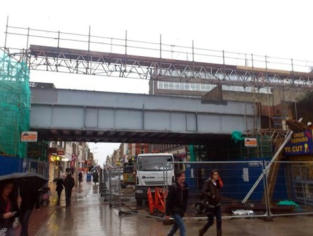
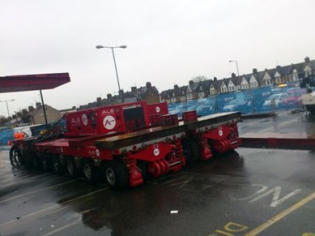
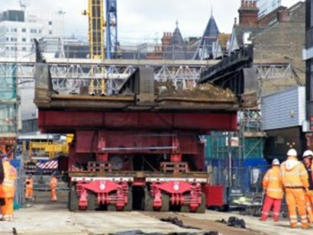
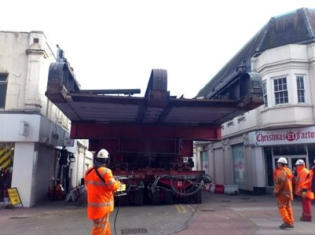
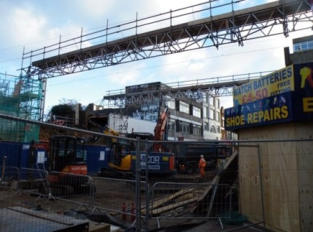
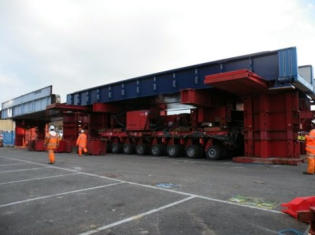

The bridge the day before it was removed
The platform used to manoeuvre the bridges
Removal of the old bridge on the platform
New replacement bridge on the platform
The High Street with no bridge
The old and new bridges in Tylers Avenue car park

Southend-on-Sea’s No 1 History Website! Documenting The Town & The Townspeople

Now Incorporating The Sea Of Change Website
Website Info:


Chalkwell ▪ Eastwood ▪ Leigh-on-Sea ▪ Prittlewell ▪ Shoeburyness ▪ Southchurch ▪ Thorpe Bay ▪ Westcliff-on-Sea
SOUTHEND CITY
































































